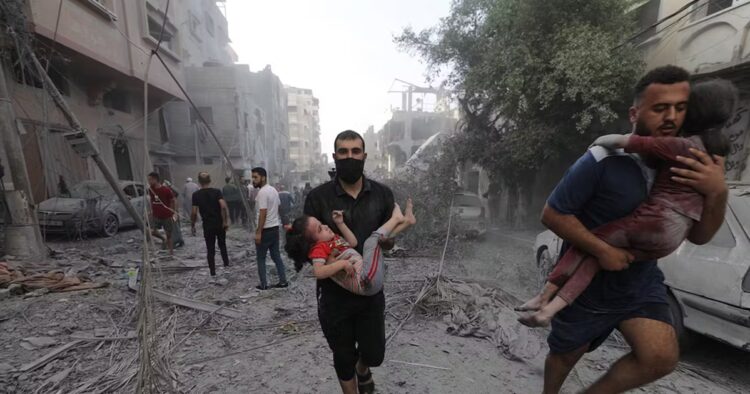Day 84 of the Israel-Gaza conflict has seen devastating consequences, with both sides grappling with the aftermath of war. Amid the discussions on the geopolitical situation, it’s the children who are bearing the brunt of the violence, becoming the forgotten casualties.
The conflict ignited on October 7 when Hamas launched attacks on Israel, triggering a brutal response. Tragically, at least 33 children were killed, and around 40 were kidnapped by Palestinian armed groups. The World Health Organization reported a chilling statistic in a UN Security Council session, stating that a child is killed every 10 minutes in Gaza.
The dire situation extends to both Israeli and Palestinian children. Those in Southern Israel live in constant fear, with parents reporting that their kids can’t sleep due to relentless bombings. In Gaza, over 4,600 children are reported killed, and nearly 9,000 are injured, creating a staggering humanitarian crisis.
The conflict has uprooted 1.5 million people from Gaza, including at least 700,000 children, according to UNICEF. Gaza’s young population, comprising 47.3% under 18, faces ongoing hardship exacerbated by the conflict’s violence and a prolonged blockade.
Notably, Hamas, designated as a terrorist organization by various nations, has taken even infants as hostages. Israeli reports reveal a 9-month-old baby held by Hamas, resulting in 21 children left orphaned. The complexity of this conflict is further evident in the discovery of terror tunnels by the Israel Defense Forces (IDF) near hospitals and schools.
Prime Minister Benjamin Netanyahu’s refusal for a ceasefire adds to the complexity. With 12 weeks into the war, civilians are left struggling for basic amenities, and international aid faces obstacles reaching the affected areas.
While Bharat and other nations contribute humanitarian aid, the situation remains dire. The conflict’s toll continues to rise, leaving thousands dead, many more injured, and a population grappling with displacement and trauma. The international community faces a critical challenge in addressing the immediate needs of those affected by this relentless and tragic conflict.

















Comments